The schooner Tara Oceans has been docked in Marseille since yesterday. Moored in front of the MUCEM (the Museum of European and Mediterranean Civilizations) until Sunday, the famous sailboat of the Tara Ocean Foundation, the French organization dedicated to scientific research and the preservation of the marine environment, is at the dock to raise awareness about plastic pollution in the oceans. Accustomed to the ice of the poles, the schooner is currently on a mission along the European coastline. DirectIndustry boarded the ship with Romain Troublé, CEO of the Tara Foundation, and the captain of the schooner, Samuel Audrain.
Thomas Fettig and Astrid Aguëra contributed to this report.
The Tara Oceans schooner arrived yesterday morning in Marseille, for a few days of stopover in front of the MUCEM. The Museum of European and Mediterranean Civilizations is celebrating its 10th anniversary.
The famous sailboat was designed by Jean-Louis Étienne for the Arctic. It was later owned by the sailor Sir Peter Blake. The Tara Foundation bought it in 2003. The boat has been exploring the seas and oceans of the globe since 1989. The schooner has traveled nearly 600,000 kilometers on water and visited 75 countries. The last time it was in Marseille was in 2019.
Water: A European Issue
The Tara Ocean Foundation is a French foundation with a seat at the UN. It is particularly known for its studies on marine biodiversity, including plankton and corals.
13,000 water samples have already been collected by the Tara Foundation according to protocols established by hundreds of laboratories worldwide. The analyses that resulted from this have made it possible to characterize some 200,000 viruses, and 150 million genes, and to discover 100,000 new species of microalgae.
Since last April and for two years, Tara has been on a mission in Europe. The objective is to characterize the chemical pollution of our coastlines and to see how coastal ecosystems react to the impacts of human activities.
Departing from Lorient (France) last April, the schooner arrived in Tallinn (Estonia) in June. Since then, it has been descending the coast towards Greece. A month ago, it was in Gibraltar, and then it went up the Spanish coast to arrive in France, stopping in Marseille. It will then sail to Italy before reaching Thessaloniki in Greece by the end of August. In total, it will spend 6 months in the Mediterranean area.



For Romain Troublé, Director General of the Tara Ocean Foundation:
“The mission is to understand the watersheds, what comes out of a watershed, what are the problematic molecules, what are the solutions that need to be implemented to stop the most problematic ones first. We will work on plastic additives, PFAS, PCBs, medications, antibiotics, and pesticides.”
The EMBL (European Molecular Biology Laboratory) will then analyze the data. It is the equivalent of CERN in physics for health, with whom the Tara Ocean Foundation collaborates.
This laboratory uses genomic techniques typically reserved for medicine but applied to the ocean here.
At the same time that Tara is at sea, teams of researchers sample the beach, the mud, and the seagrass to establish links between land and sea.
“It is a fundamental research mission that will bring out future water quality issues. Today, the media talk a lot about water quantity, with last year’s drought. But water quality is a major issue for Europe and especially for the European Green Deal, where we must also think about the climate, but also about water quality, which is our health for all.”
On Board: The Rosette
We followed Samuel Audrain, Captain of the Tara Oceans, on board the schooner. For the current mission, there are 14 people on board. Five sailors, seven scientists, a correspondent on board, and an artist to share and testify to the research and help raise awareness.
We started on the aft deck. This is where the sampling mission begins with a set of sampling bottles assembled in a large oceanographic instrument called the CTD rosette. Adapted to any temperature, the rosette is capable of sampling in both the Arctic and very warm seas up to 2500 meters deep. It provides information on water salinity and temperature, but also on living organisms present in the water column.
“It is from the aft deck that we have access to the sea. And with the oceanographic winch coming from under the aft deck, we lower instruments into the sea, like this rosette. This allows us to take samples to the bottom of the sea. Sometimes we go down to 1500 meters, sometimes to 10 meters. It depends on where we take the samples. On this mission in the Mediterranean, we are often close to the coast, so we work in shallow depths.”
The bottles are submerged in the open position. They close automatically thanks to a pre-programmed system once the collection is complete.
“We can deploy the rosette in meteorological conditions up to 25 knots of wind and 2.50 meters of swell. We stop when we start taking on water on the deck. At that point, we cannot work anymore; it becomes dangerous for the equipment, risking instrumentation failures.”
An oceanographic engineer is permanently on board to maintain the equipment, especially the rosette.
Samples can be taken at the entrance and/or exit of ports to monitor invasive species brought in, notably by ballast water from cargo ships. They can also be taken at river outlets, near cities, or densely populated agricultural areas. The goal is to have a comprehensive view of the entire European coastline.
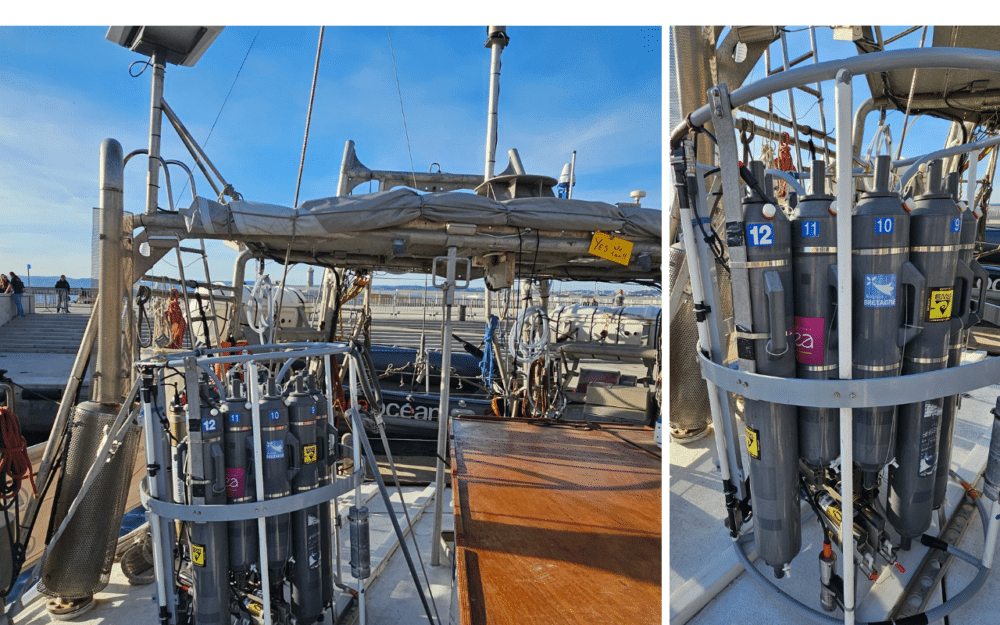
In the Floating Laboratories: Sampling
Once the water is collected and brought up with the rosette, scientists must filter it. The first filtration step is done in the wet lab on the deck. The rest takes place inside the schooner. In the sorting lab, scientists work on characterizing the data.
But Morgan Guillam, a biologist engineer aboard the Tara, emphasizes that Tara’s mission is to collect data and concentrate samples. They will then be sent to land-based laboratories such as the EMBL for further studies and analyses.
“Tara is a laboratory that allows sampling of biological species, from viruses to large zooplankton, but also chemical molecules like carbon or mercury. We will also identify a whole range of pollutants, including pharmaceutical molecules, pesticides, and plastics. But we only do sampling; there is no analysis on board.”
Various sampling tools are available in Tara’s laboratories, continues Morgane:
“For biological sampling, we pump water directly and pass it through filters to collect biomass.”
There are different filter porosities. The smallest porosity, 0.2 microns, allows filtering of viruses. With larger mesh nets, for example, one millimeter, it is possible to filter larger organisms. These can be small jellyfish, fish larvae, and even crustaceans.
“For chemical molecules, pre-filtered water is passed through extraction cartridges. These cartridges attract the chemical molecules we want to sample, such as pharmaceutical molecules, pesticides, or plastics.”
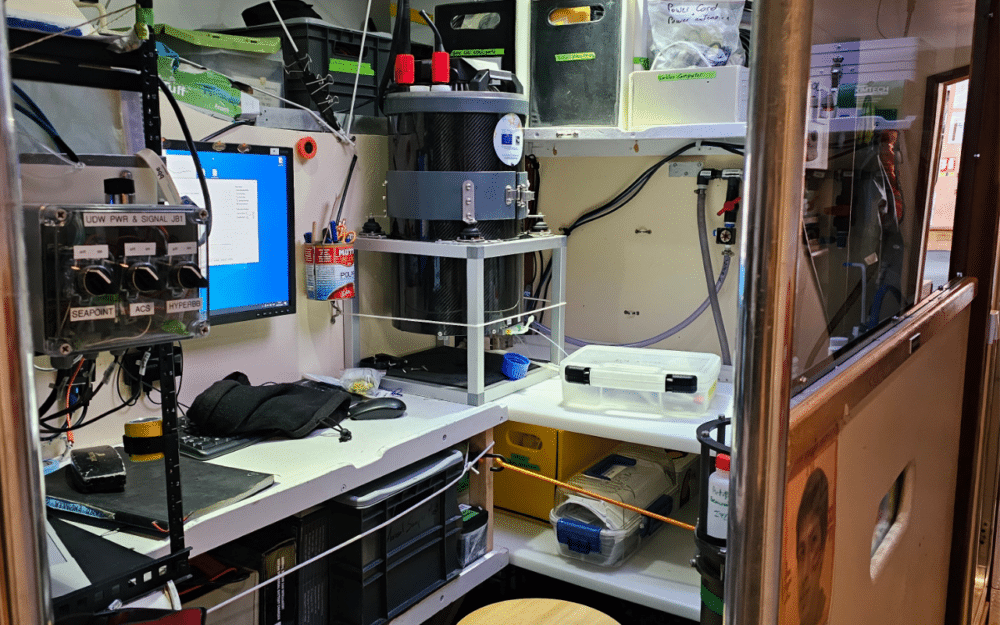
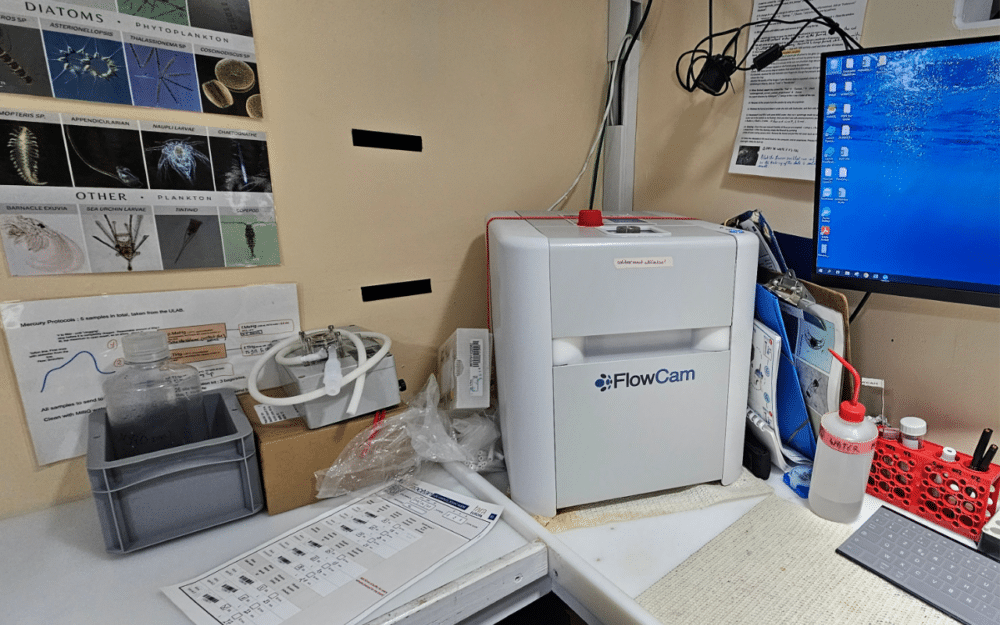
The sorting lab also has imaging tools. A Leica binocular microscope. And also a FloCam by Yokogawa that analyzes subvisible particles with flow imaging microscopy.
“The FloCam takes photos rapidly and regularly of this plankton. It can detect particles. This gives an idea of the microorganisms in the samples, to determine if they are phytoplankton, diatoms, copepods, or dinoflagellates.”
The FloCam is also connected to an open-source AI tool, Ecotaxa. This sorts and categorizes the photos directly on the tree of life.
In the underway lab, water is continuously filtered throughout the mission to monitor basic physicochemical data.
“Every half hour, an instrument like the FloCam takes photos of all the particles in a five-milliliter water sample to verify water temperature, chlorophyll, or salinity.”
Sample Storage
Each sample is then packaged in a test tube with a unique barcode. Thousands of these tubes are stored on board. Some of the physical samples are stored in large containers of liquid nitrogen at -180°C. Other samples are kept in freezers located at the front of the boat at -20°C or 2°C.
The goal for scientists is not to keep the samples on board for too long. Therefore, the samples are shipped to various laboratories participating in the current project, whenever possible. On the day of our visit, the scientists delivered samples of mercury to the Mediterranean Institute of Oceanography in Marseille.

The Schooner
Built at the initiative of Jean Louis Etienne in 1989 to explore the Arctic ice, the 140-ton boat has a robust structure. It was constructed with special technical properties to adapt it to polar temperatures. The hull is made of aluminum. The bottom of the hull is twenty-five millimeters thick, while the sides have a thickness of 16 mm.
It measures 36 meters in length and 10 meters in width. The boat has two central drifts that provide form stability but no keel. Its rounded shapes allow it to be lifted by the pack ice rather than crushed by the compression of the ice.
For its captain, Samuel Audrain,
“I started working with the Foundation almost 20 years ago, and for me, the boat is in better condition today than it was twenty years ago. It is more operational. Many workspaces have been really adapted and optimized. The base was very good, so we can’t say it will stop in thirty years.”
However, while the schooner has been able to sail in all corners of the world, hot and cold,
“It is less comfortable in the heat than in the cold because it is very well insulated. There are few openings; it is optimal for cold regions.”
The boat is equipped with two 350-horsepower engines. Samuel admits that due to its size and design, it is difficult to upgrade Tara’s engines to more electric and therefore more environmentally friendly models. Nevertheless, the schooner runs on HVO, a recycled fuel.
The advantage of a sailboat, he adds, is that it can operate solely under sail. And indeed, with 40 knots downwind, the schooner is capable of averaging ten knots.
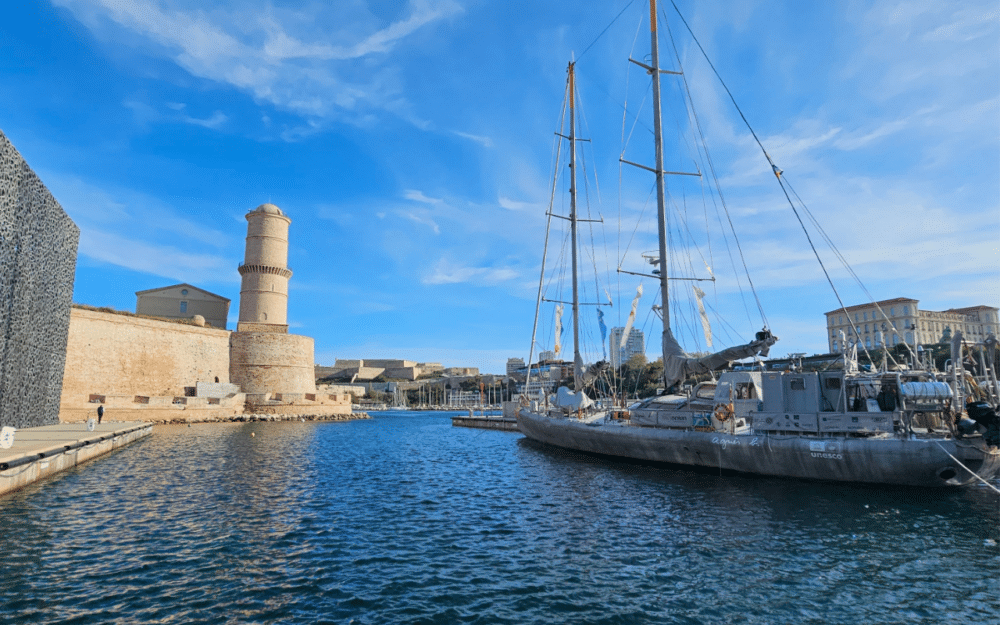
Tara Polar Station
Starting in 2026, a new vessel will join the fleet of the Tara Ocean Foundation. Tara Polar Station, currently under construction in Cherbourg (France), is a drifting base that will be trapped in the Arctic ice from September 2026. The base, made of aluminum, will drift for 14 months and will be able to withstand temperatures of -52°C.
This drifting laboratory will feature the same sampling protocols and instruments as the Tara schooner, such as the rosette. This equipment will be capable of descending to depths of nearly 2000 meters.
One small innovation, however, is a 1,4 m moon pool that will allow the rosette to be deployed directly into the water from the ship, explains Samuel:
“When we were in the Arctic with Tara, we had a system with a cable that went outside, so we had to maintain a hole in the ice floe. But when it’s minus twenty, minus forty, it’s not always easy to work. So, the idea here is to have continuous access to water at the heart of the ship.”
The mission will study the ecosystem at the ice level, biodiversity, and the impact of climate change. Scientists will also observe fish migrations from the south to the north. They will contribute to alert policymakers to this area which is the focus of many climate-related tensions.
“For twenty years, there has been a significant change. Year after year, we see record-breaking disappearance of sea ice in summer, and the thickness of the sea ice keeps decreasing. We already know that the Arctic is warming three to four times faster than the rest of the planet. And this has an impact on us. This expedition will allow us to predict how we should adapt.”
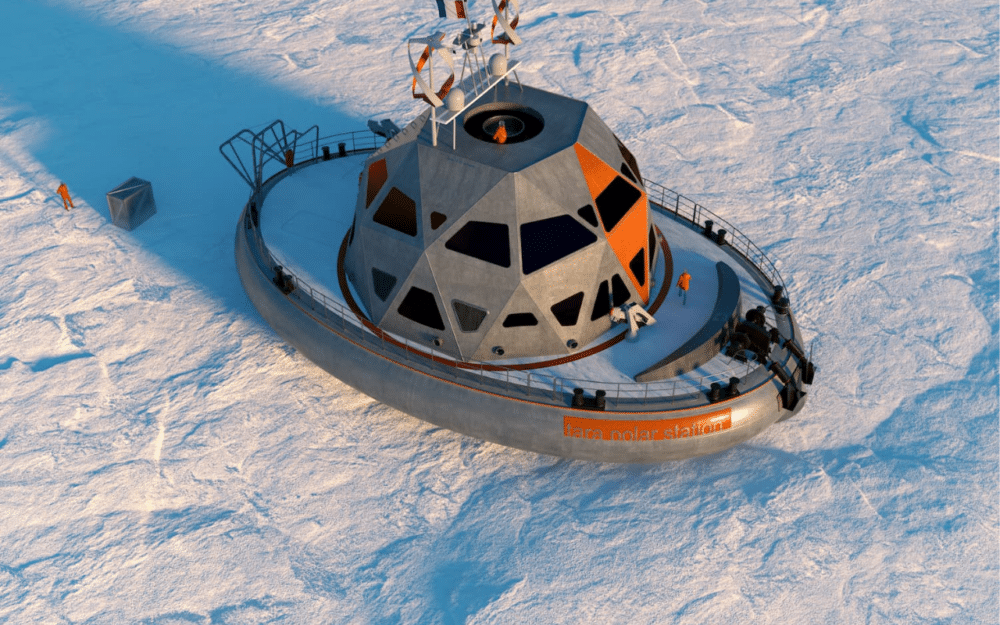
MUCEM’s 10th Anniversary
The presence of the Tara Oceans schooner is part of the 10th-anniversary celebration of the MUCEM. For the occasion, a program is planned throughout the weekend in Marseille for the general public. The Big Blue Museum Exhibition includes visits to the schooner, artist meetings in the MUCEM auditorium, a major conference on plastic pollution, workshops on microplastic pollution, as well as discussions on the unseen species of the ocean.
According to Pierre-Olivier Costa, President of the MUCEM,
“For its ten years, the museum could not ignore what it is. It is a maritime museum set on the sea, living with the sea. And for its tenth anniversary, the Mucem really wanted to engage, to try to contribute to improving the fate of this sea.”
As explained by Myriam Thomas, Director of the Ocean Culture & Awareness Department of the Tara Foundation,
“We will be able to share about the research we conduct on board, to show a little bit the scale between microplastics and marine microorganisms, to understand why this pollution becomes inseparable from microorganisms.”
The idea is also to discuss the challenges of pollution in the Mediterranean and the solutions that can be brought. Because as everyone at Tara says, there are solutions to combat pollution.
Tara sets sail again on Sunday morning heading to Nice for a very short stop of three days. It will then perform a sampling sequence for 15 days on the west coast of Italy up to Naples. It will arrive in Greece in August.
For more info on Tara: https://fondationtaraocean.org/en/explore/
For more info on the MUCEM: https://www.mucem.org/en/big-blue-museum
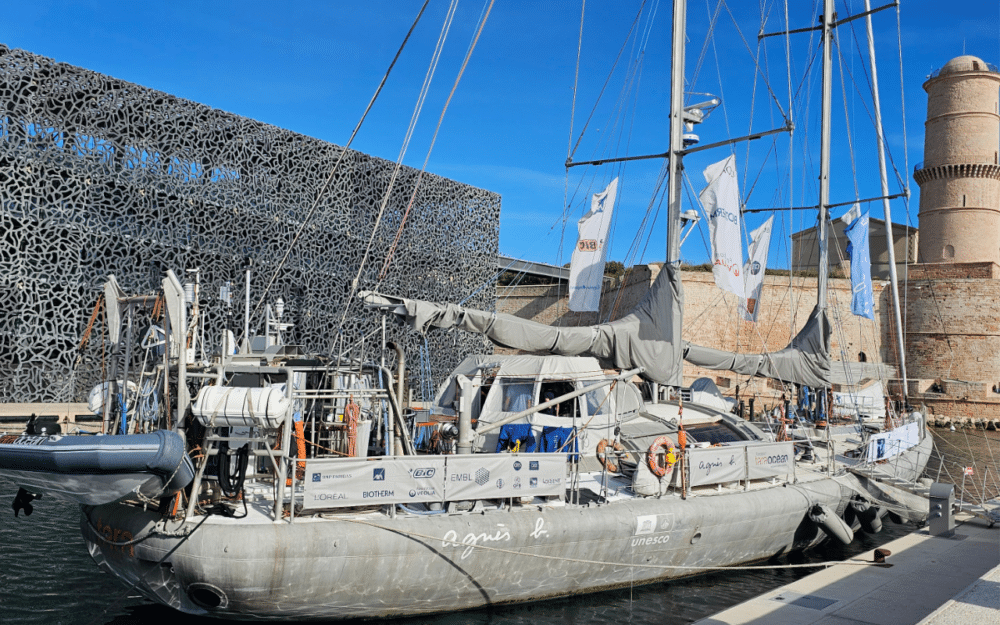








![Image [Buying Guide] How to Choose the Right Protection Gloves?](/wp-content/uploads/sites/3/Gloves-1-320x213.jpg)
